One of the most significant historical artists, Pablo Picasso, is a luminary who has stood the test of time.
Pablo Picasso’s pioneering spirit and creative ingenuity have been showcased in a career spanning seven decades. This longevity has endowed us with an extensive body of work that genuinely encapsulates his unparalleled genius. Join us as we delve deeper into the art and life of Pablo Picasso, exploring the man behind some of the most iconic artwork ever created.
Table of Contents
- The Genius Of Pablo Picasso: A Lifelong Oeuvre Of Artistic Reinvention
- Why Is Picasso’s Art So Important?
- A Closer Look At Pablo Picasso’s Main Artworks
- Related Questions
The Genius Of Pablo Picasso: A Lifelong Oeuvre Of Artistic Reinvention
Few names in the art world evoke as much reverence, recognition, and debate as Pablo Picasso. A pioneering mastermind whose creative journey spanned over seven prolific decades,
Pablo Picasso was an artist who defied and defined his times. Born in Málaga, Spain, in 1881, he left an indelible impression on art, fashioning his distinct mark through various styles, methods, and mediums.
But what makes Picasso such an enigmatic and respected figure in the art world?
Who Was Pablo Picasso?
Pablo Diego José Francisco de Paula Juan Nepomuceno María de los Remedios Cipriano de la Santísima Trinidad Ruiz y Picasso, more commonly known as Pablo Picasso, was a Spanish painter, sculptor, printmaker, ceramicist, and stage designer. His expansive oeuvre encompasses over 20,000 artworks, including paintings, drawings, sculptures, ceramics, prints, textiles, theater sets, and costume design.
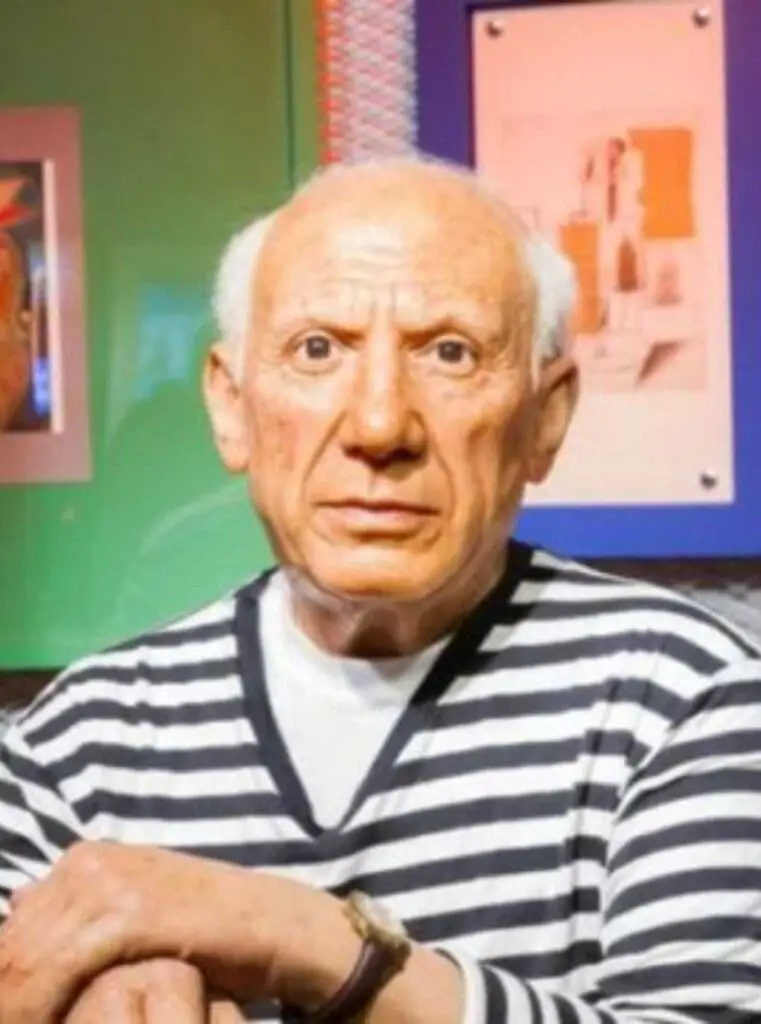
Picasso’s greatness lies in his technical mastery, prolific output, and fearless innovation. Many artists find a style and stick with it. Picasso, however, was ever-evolving.
He was a creative chameleon, able to adapt and change his artistic style almost effortlessly. From his early years in the academies to his involvement in initiating the Cubist movement to his exploration of Surrealism, Picasso’s artistry is a tale of constant evolution.
Why Is Picasso’s Art So Important?
Art often reflects its time, capturing the zeitgeist, emotions, and cultural ethos in its depiction. Picasso’s work does this and more. His art directly engages with his era’s political, social, and philosophical currents.
Through different phases, including his Blue Period, Rose Period, African Art-inspired Period, Analytic Cubism, and Synthetic Cubism, among others, Picasso constantly broke new ground.
- Innovation: Picasso didn’t just stick to one style or medium. His constant evolution meant he was always ahead of the curve, pushing boundaries and encouraging others to do the same.
- Political Impact: Picasso’s work is deeply embedded in his times’ political and social climates. For instance, his work “Guernica” is an outright political statement against the atrocities of the Spanish Civil War.
- Influence: Picasso’s innovations played a crucial role in shaping modern art. His initiation and propagation of Cubism alone had a seismic impact on how form and space were understood, influencing painting, sculpture, and architecture.
A Closer Look At Pablo Picasso’s Main Artworks
To understand Picasso’s importance, it is crucial to delve into some of his most celebrated works. Each piece is a snapshot of his genius, showcasing his technical skill and ability to capture complex emotions and ideas.
The Blue Period (1901-1904)
“La Vie” (1903)
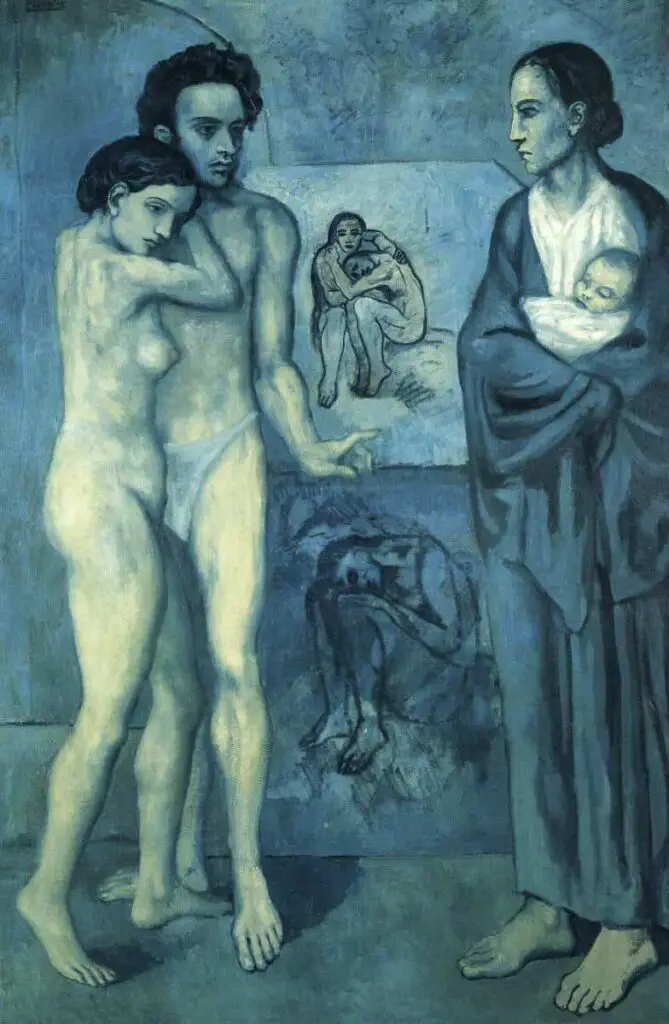
“La Vie” is one of Picasso’s seminal works from his Blue Period. Rendered almost entirely in shades of blue, the painting is a commentary on life’s struggles. It’s thought that the artwork was influenced by the suicide of his close friend, Carlos Casagemas.
The Rose Period (1904-1906)
“Family of Saltimbanques” (1905)
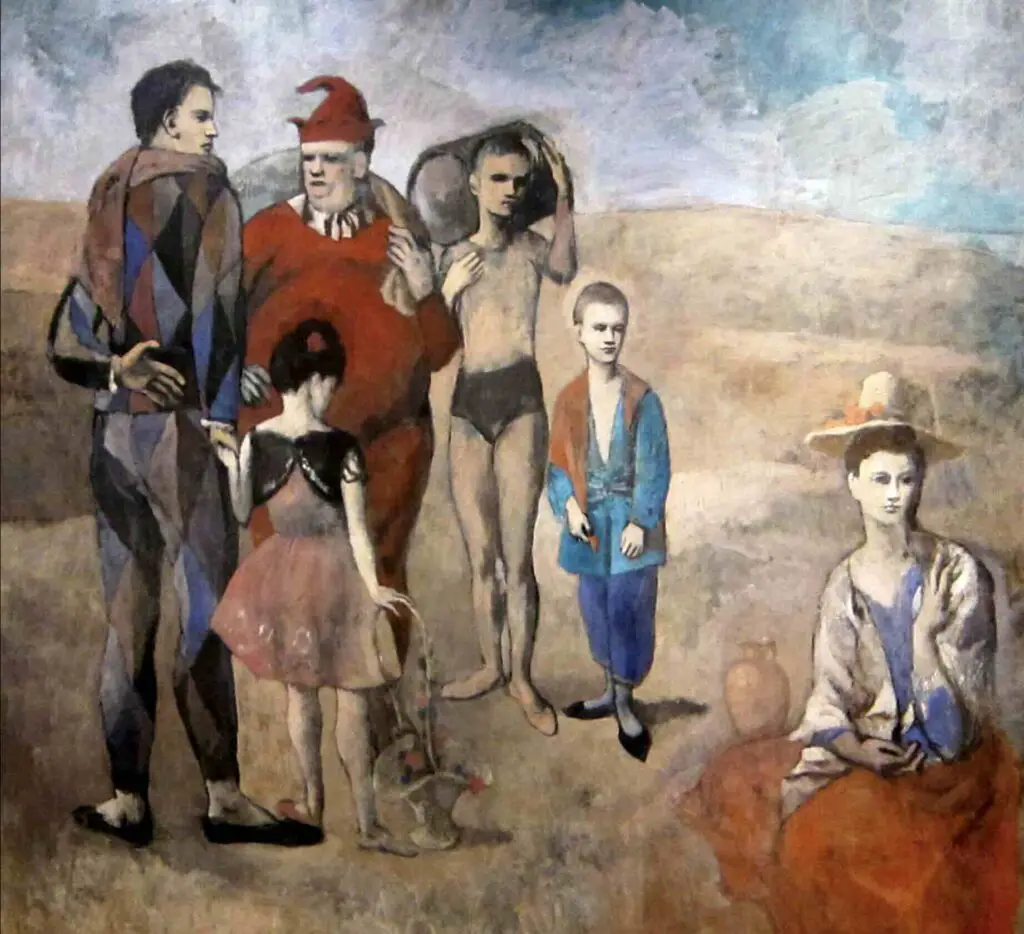
Moving away from the somber tones of the Blue Period, Picasso’s Rose Period features more optimistic themes and hues. “Family of Saltimbanques” portrays a group of circus performers in a desert-like landscape, marking a significant transition towards a more hopeful and less grim subject matter.
African Art-Inspired Period (1907-1909)
“Les Demoiselles d’Avignon” (1907)
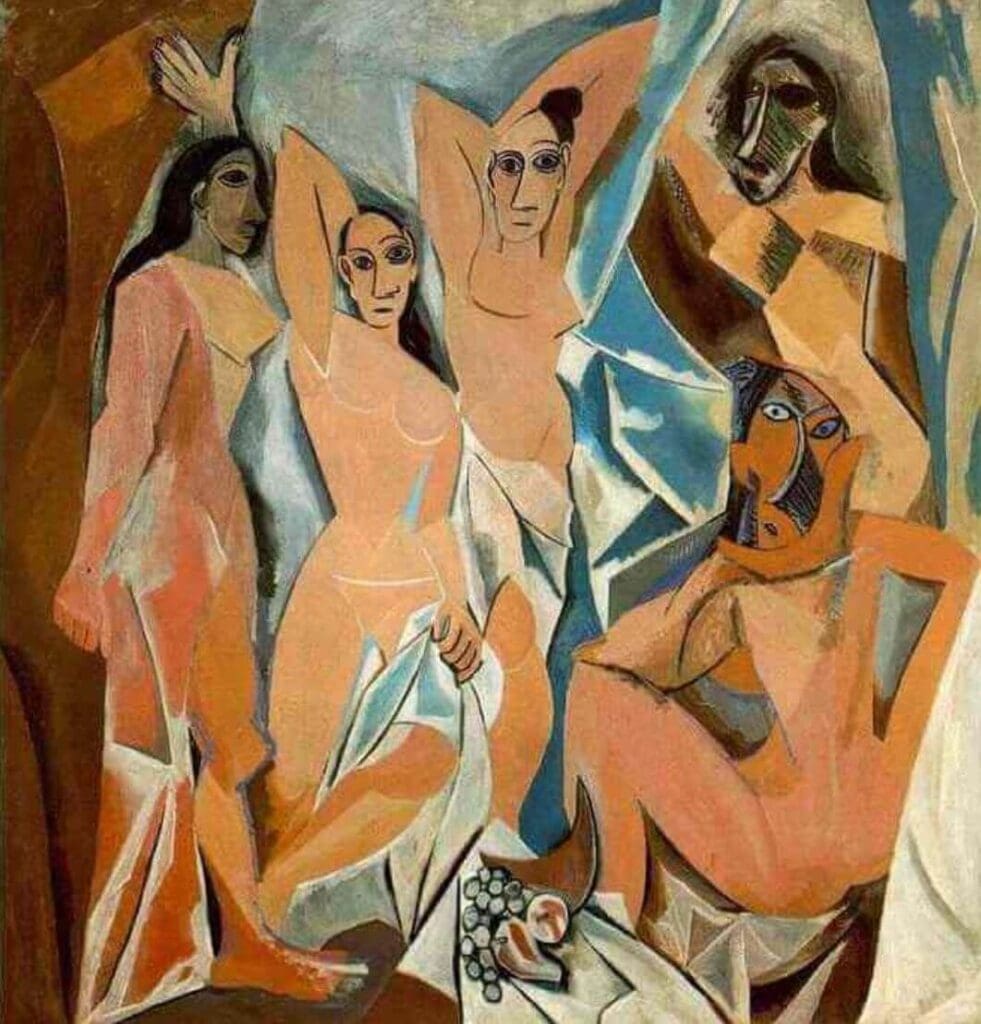
This painting marks a radical break from traditional European painting. Incorporating Iberian and African influences, Picasso presents a dislocated, fragmented form that paved the way for Cubism.
Analytic Cubism (1909-1912)
“Violin and Candlestick” (1910)
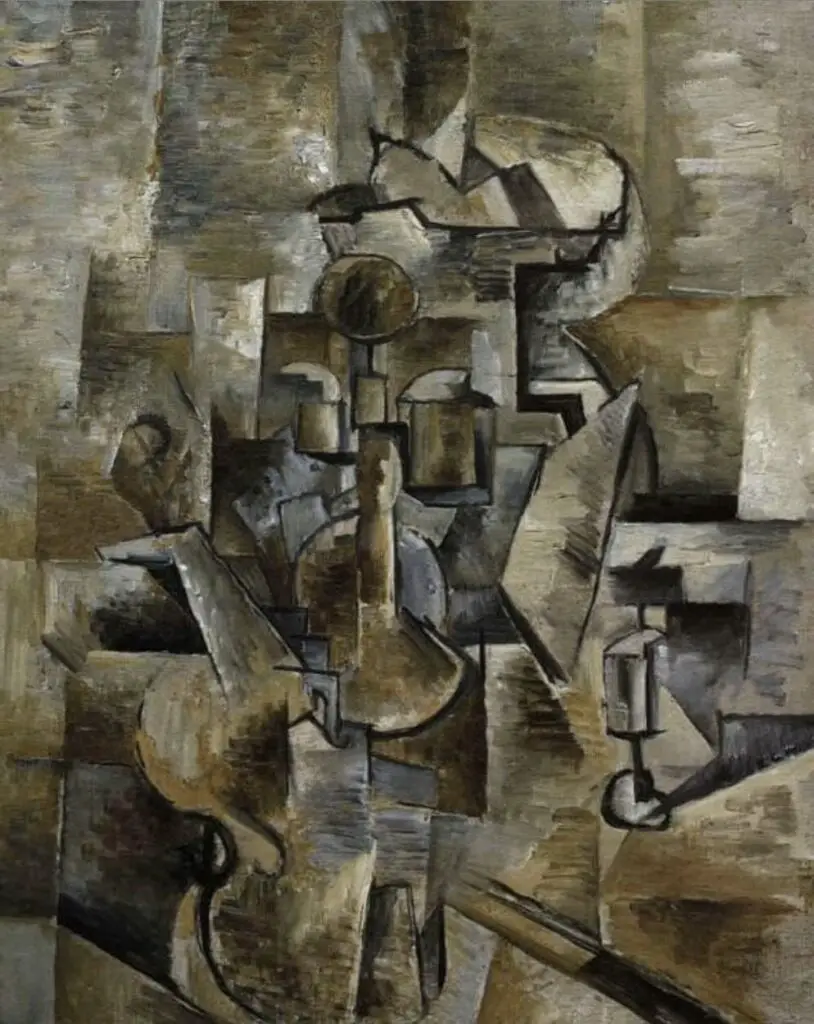
This piece is a classic example of Analytic Cubism, a style co-founded by Picasso and Georges Braque. The work deconstructs objects into geometric shapes, allowing multiple viewpoints simultaneously.
Surrealism And Later Life
“Guernica” (1937)
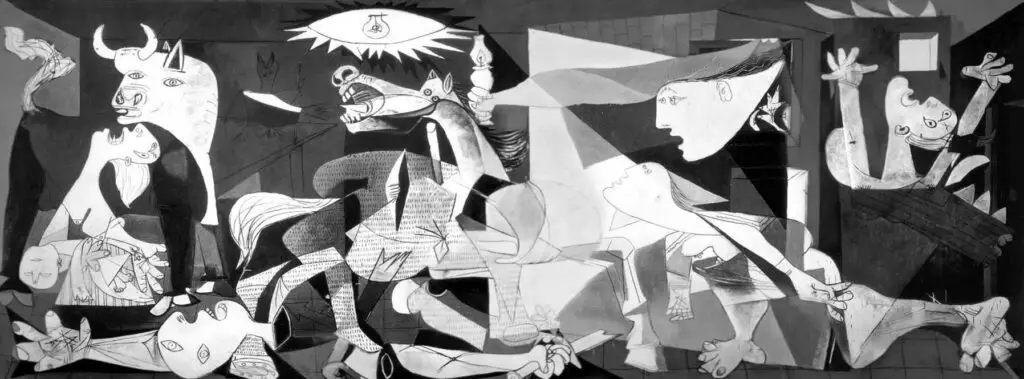
Perhaps one of the most famous anti-war pieces of art ever created, “Guernica,” was Picasso’s response to the Nazi’s devastating bombing of the Basque town of Guernica during the Spanish Civil War. The large mural is a chaotic depiction of destruction and suffering.
Picasso once said, “Art washes away from the soul the dust of everyday life.” His life and art stand as a testament to this. Through constant evolution and a willingness to confront the zeitgeist head-on,
Picasso’s work remains a cornerstone of artistic achievement and a powerful lens through which we can view the complexities of the 20th century. As we move further into the 21st century, the genius of Pablo Picasso continues to captivate and challenge us, underscoring his art’s undying relevance and vitality.
Anita Louise Art is dedicated to art education, great artists, and inspiring others to find and create their art. We love art that uplifts and inspires. #ArtToMakeYouSmile! #ArtToMakeYouHappy!
If you want to see any of my art, you can find out more by clicking here. If you are interested in what inspires me and my paintings, you can discover more by clicking here.
We have a free newsletter and would love you to be part of our community; you can subscribe to the newsletter by clicking here. If you have any questions, I would be happy to talk to you. You can reach me, Anita, by clicking here.
Subscribe to our Anita Louise Art YouTube Channel filled with great videos and information by clicking here.
Join us for our podcast “5 Minutes With Art.” Spend 5 minutes a week with us to discover and learn about great art and artists. You can find out more about our podcast by clicking here.
Related Questions
Salvador Dalí And Pablo Picasso, Similarities And Differences
Salvador Dalí and Pablo Picasso are two of the most iconic and influential artists of the 20th century. These Spanish painters revolutionized the art world with their unique styles and groundbreaking approaches to art. Although they were contemporaries and shared a common heritage, their styles differed vastly, and their artistic visions diverged significantly.
By clicking here, you can learn more by reading Salvador Dalí And Pablo Picasso, Similarities And Differences.
Differences Between Leonardo da Vinci And Pablo Picasso
Leonardo da Vinci and Pablo Picasso lived in entirely different times; their artwork is also very different. Both are considered artistic geniuses who influenced art movements and were essential artists during the time and place they lived. Leonardo only painted a few paintings, whereas Picasso was a prolific artist.
By clicking here, you can learn more by reading Differences Between Leonardo da Vinci And Pablo Picasso.
40 Inspiring Quotes From The Artist Pablo Picasso
The Spanish artist Pablo Picasso lived a very long life. During his lifetime he gave us many inspiring quotes about art, love, and living life. These are some of our favorite quotes by Pablo Picasso.
By clicking here, you can learn more by reading 40 Inspiring Quotes From The Artist Pablo Picasso.


